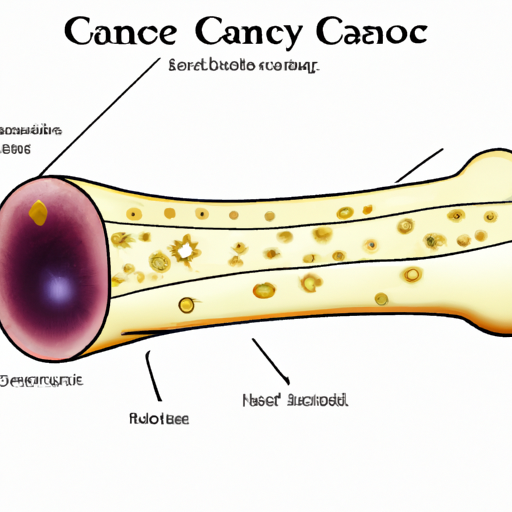As a caregiver, you’re likely already familiar with the numerous health issues that can affect your canine companion. But today, we’re going to delve deeper and discuss a specific topic: bone cancer in dogs.
What is Bone Cancer in Dogs?
Bone cancer, or osteosarcoma, is a fast-growing and aggressive type of cancer that typically affects large and giant breeds of dogs. It develops in the skeleton, often occurring in the limbs, and can cause pain, lameness, and swelling.
- Osteosarcoma is the most common type of bone cancer in dogs, accounting for about 85% of all cases.
- Chondrosarcoma, fibrosarcoma, and hemangiosarcoma are other types of bone cancers that are less common.
Causes of Bone Cancer in Dogs
While the exact cause of bone cancer in dogs is still unknown, several factors are believed to increase the risk:
- Age: Bone cancer is more common in older dogs.
- Size: Larger breeds are more likely to develop this disease.
- Gender: Male dogs have a slightly higher risk.
- Genetics: Certain breeds, such as Rottweilers, Greyhounds, and Saint Bernards, are genetically predisposed to bone cancer.
| Risk Factor | Description |
|---|---|
| Age | Older dogs are more susceptible |
| Size | Larger breeds have higher risk |
| Gender | Males are slightly more at risk |
| Genetics | Some breeds are genetically predisposed |
Symptoms of Bone Cancer in Dogs
The signs of bone cancer in dogs can be subtle and may be mistaken for other conditions. Common symptoms include:
- Lameness or limping
- Swelling in the affected area
- Pain and discomfort
- Loss of appetite
- Unexplained weight loss
Treatment Options for Bone Cancer in Dogs
Treatment for bone cancer in dogs often involves a combination of surgery, chemotherapy, and radiation therapy. The approach depends on the severity and location of the cancer, as well as your dog’s overall health.
- Surgery: This usually involves amputating the affected limb to prevent the cancer from spreading.
- Chemotherapy: This treatment uses drugs to kill cancer cells.
- Radiation Therapy: This treatment uses high-energy rays to kill cancer cells.
How to Prevent Bone Cancer in Dogs
While there’s no surefire way to prevent bone cancer in dogs, there are steps you can take to lower your dog’s risk:
- Regular veterinary check-ups
- Balanced diet and exercise
- Avoid exposure to carcinogens
Frequently Asked Questions
1. Are certain breeds more prone to bone cancer?
Yes, larger breeds like Rottweilers, Greyhounds, and Saint Bernards are more prone to bone cancer.
2. Can bone cancer in dogs be cured?
The prognosis for bone cancer in dogs varies, but early detection and treatment can improve survival rates.
3. What is the life expectancy of a dog with bone cancer?
The life expectancy can vary greatly depending on the stage at which the cancer is diagnosed and the treatment received.
4. Can a dog live a normal life after amputation due to bone cancer?
Many dogs adapt well to life on three legs and can live a happy, fulfilling life after amputation.
As you continue your journey as a caregiver, keep these insights in mind. Stay proactive about your dog’s health, and never hesitate to consult with your vet if you notice any changes in your dog’s behavior or physical condition. Remember, early detection is key in managing bone cancer in dogs.



